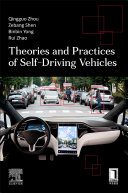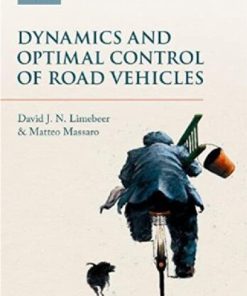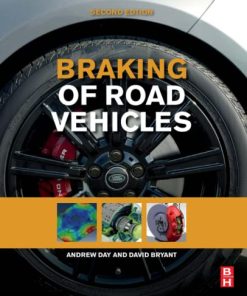Theories and Practices of Self-Driving Vehicles 1st edition
$50.00 Original price was: $50.00.$25.00Current price is: $25.00.
Theories and Practices of Self-Driving Vehicles 1st edition – Ebook Instant Download/Delivery ISBN(s): 9780323994484,0323994482,9780323994491, 0323994490
Product details:
- ISBN-10 : 0323994490
- ISBN-13 : 9780323994491
- Author: Qingguo Zhou; Zebang Shen; Binbin Yong; Rui Zhao; Peng Zhi
Self-driving vehicles are a rapidly growing area of research and expertise. Theories and Practice of Self-Driving Vehicles presents a comprehensive introduction to the technology of self driving vehicles across the three domains of perception, planning and control. The title systematically introduces vehicle systems from principles to practice, including basic knowledge of ROS programming, machine and deep learning, as well as basic modules such as environmental perception and sensor fusion. The book introduces advanced control algorithms as well as important areas of new research. This title offers engineers, technicians and students an accessible handbook to the entire stack of technology in a self-driving vehicle.
Table contents:
Chapter 1. First acquaintance with unmanned vehicles
1.1. What are unmanned vehicles?
1.2. Why do we need unmanned vehicles?
1.3. Basic framework of the unmanned vehicle system
1.4. Development environment configuration
Chapter 2. Introduction to robot operating system
2.1. ROS introduction
Chapter 3. Localization for unmanned vehicle
3.1. Principle of achieving localization
3.2. ICP algorithm
3.3. Normal distribution transform
3.4. Localization system based on global positioning system (GPS) + inertial navigation system (INS)
3.5. SLAM-based localization system
Chapter 4. State estimation and sensor fusion
4.1. Kalman filter and state estimation
4.2. Advanced motion modeling and EKF
4.3. UKF
Chapter 5. Introduction of machine learning and neural networks
5.1. Basic concepts of machine learning
5.2. Supervised learning
5.3. Fundamentals of neural network
5.4. Using Keras to implement the neural network
Chapter 6. Deep learning and visual perception
6.1. Deep feedforward neural networks—why is it necessary to be deep?
6.2. Regularization technology applied to deep neural networks
6.3. Actual combat—traffic sign recognition
6.4. Introduction to convolutional neural networks
6.5. Vehicle detection based on YOLO2
Chapter 7. Transfer learning and end-to-end self-driving
7.1. Transfer learning
7.2. End-to-end selfdriving
7.3. End-to-end selfdriving simulation
7.4. Summary of this chapter
Chapter 8. Getting started with self-driving planning
8.1. A∗ algorithm
8.2. Hierarchical finite state machine (HFSM) and autonomous vehicle behavior planning
8.3. Autonomous vehicle route generation based on free boundary cubic spline interpolation
8.4. Motion planning method of the autonomous vehicle based on Frenet optimization trajectory
Chapter 9. Vehicle model and advanced control
9.1. Kinematic bicycle model and dynamic bicycle model
9.2. Rudiments of autonomous vehicle control
9.3. MPC based on kinematic model
9.4. Trajectory tracking
Chapter 10. Deep reinforcement learning and application in self-driving
10.1. Overview of reinforcement learning
10.2. Reinforcement learning
10.3. Approximate value function
10.4. Deep Q network algorithm
10.5. Policy gradient
10.6. Deep deterministic policy gradient and TORCS game control
10.7. Summary
People also search:
are there self driving cars on the road
types of driverless cars
how many self driving cars are on the road
the self-driving car
the dangers of self-driving cars
You may also like…
Engineering - Engineering - General & Miscellaneous
Dynamics and Optimal Control of Road Vehicles D. J. N. Limebeer
Education Studies & Teaching - Special Education
Engineering - Automotive
Politics & Philosophy - Social Sciences
Theories of development : concepts and applications 6th Edition
Uncategorized
Engineering - Electrical & Electronic Engineering
Smart Charging Solutions for Hybrid and Electric Vehicles 1st Edition










